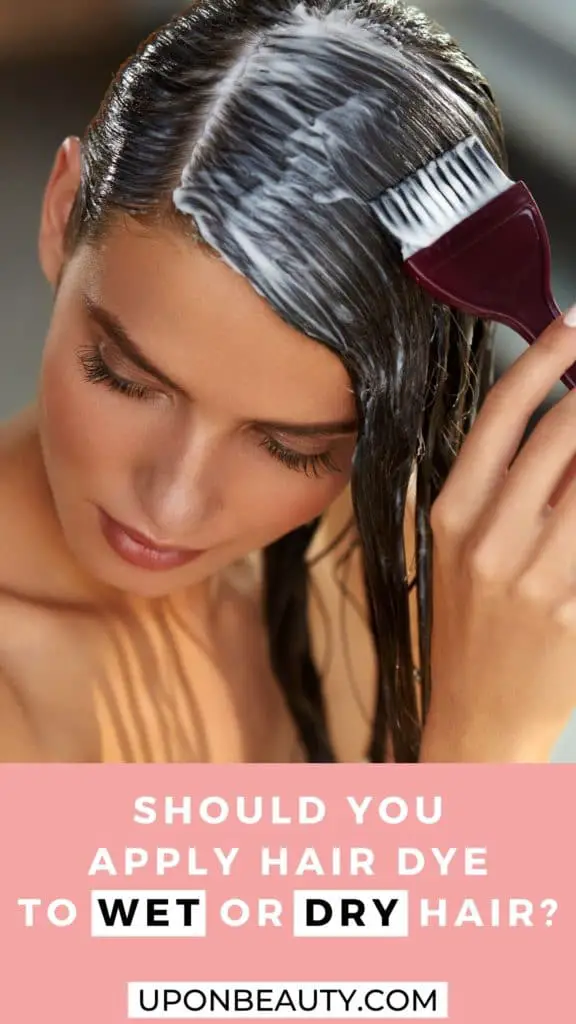Table Of Content

When you are in a hair salon, you will see that they are only dyeing on dry hair. Hair that is dyed when wet tends to lose color much faster. This is because the color rests on the surface of the hair strands as opposed to getting absorbed into them. Ideally, you should wait three days, at the very least, before applying shampoo. However, if subtle is not your target, you will not get the kind of vibrancy that you would get from dyeing your hair when dry.
Conclusion. Dyeing wet hair recommended?
This helps you save money and potentially prevents damage to your hair. Since there is moisture prevalent in wet hair, the hair color can be distributed evenly throughout the hair. Trying to distribute hair color to dry hair evenly is less effective because it takes more patience to make sure the hair dye is evenly spread throughout the hair. These types of dyes are often referred to as “color rinses” or “color glosses,” and they typically contain less pigment than permanent or semi-permanent hair dyes.
Can You Use Purple Toning Shampoo On Brown Hair?
If you’re considering dyeing your hair at home, you must do some research and prep work ahead of time. A lot of fun colors like green, purple, and pink (Rose gold, anyone?) are available in semi-permanent dye formulations. These colors require that hair be bleached to really “pop,” and I personally recommend you leave the bleaching to the pros. Let’s get real, it’s a lot easier to just glob a bunch of hair dye onto some gloves and lather it all in the shower than it is to try to do an at-home brush-and-bowl bit. I don’t know about you, but when I try to use the brush and bowl, my dye gets everywhere, and it makes cleaning up a pain in the neck.
What types of hair dye work best on wet hair?
This technique is a little bit softer than ombré (sombré means “soft ombré”). To get this look, ask for highlights that are just a few shades lighter than your natural color so that the result is subtle. If less dye is absorbed, the color might be less resistant to shampooing and more prone to fading after one or two washes.
For example, when your hair is highlighted, the stylist removes the foils and rinses the bleach away. They then color the rest of your hair with permanent hair dye while still wet. Applying permanent color to wet hair is more likely to damage it. It will be good if the hair dye makes the hair not a couple of tones darker, but much more, to weaken the color intensity, the pigment should be applied to wet hair.
Quick Tips to Maximize Results

Before dyeing your hair – wet or dry – ensure your hair is unwashed for at least 2 days to prevent breakage and more damage to your hair shaft and cuticles. Semi-permanent hair dye is not affected by the presence of water, so if you want to dye your hair while it is wet, it is best to use a semi-permanent hair color. The one drawback is that if your hair is dry and porous, it could soak up more water than dye if applied to wet hair. The formulation is meant to be temporary, so it shouldn’t be too affected by the presence of water. However, if your hair is dry, I would recommend applying the demi-permanent color to dry hair.
Can You Dye Wet Hair?: What You Need to Know
There is no special instruction for depositing hair dye on wet hair. The instructions provided with your dye package are the same length and process for dry hair. This is because wet hair will absorb water before you even apply the dye, which means the colors won’t be properly absorbed into hair cuticles as much. That said, I also understand the therapeutic effect of taking your hair color into your own hands.
Can You Dye Wet Hair? Yes, But Not in All Cases
How to Repair Damaged Hair: 9 Fixes to Try at Home - Good Housekeeping
How to Repair Damaged Hair: 9 Fixes to Try at Home.
Posted: Wed, 14 Sep 2022 07:00:00 GMT [source]
This can allow the pigments of the dye to come out through the pores. Rather than using hot or warm water to rinse dyed hair (right after dyeing it or in subsequent showers), use cool water to wash your hair and a cold water rinse to finish up. But if the change you want to make is simple and you’re interested in DIY dyeing, picking the right coloring kit is key. It is also best to avoid washing your hair directly after coloring.
Part of the reason why at-home hair dyes are so popular is that they generally cost a small fraction of the cost of going to the salon. Fash explains that, on average, a hair coloring job will set you back between $60 and $150. This range depends on the extent of the hair coloring and the salon you go to. If all you need is a quick refresh of your existing hair color, an at-home hair dye box might be better for you.
Developed by French hair colorists, balayage, a highlighting technique, has been around since the 1970s but has recently really taken off in popularity. Balayage looks natural as it grows in (meaning fewer touch-ups!). Overall, it’s a great option for those with brown hair who want to brighten up their look.
Unlike permanent dyes, semi-permanent colors don’t contain harsh developers such as ammonia or peroxide. They are created to just externally coat the cuticle for a short-term change. Semi-permanent hair colors contain no peroxide developers and no ammonia.
No comments:
Post a Comment